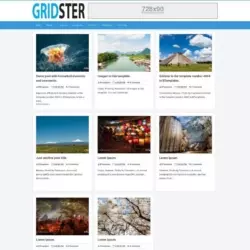-

Herşey Dahil Sadece 350 Tl'ye Web Site Sahibi Ol
Hızlı ve kolay bir şekilde sende web site sahibi olmak istiyorsan tek yapman gereken sitenin aşağısında bulunan iletişim formu üzerinden gerekli bilgileri girmen. Hepsi bu kadar.
-

Web Siteye Reklam Ver
Sende web sitemize reklam vermek veya ilan vermek istiyorsan. Tek yapman gereken sitenin en altında bulunan yere iletişim bilgilerini girmen yeterli olacaktır. Ekip arkadaşlarımız siziznle iletişime gececektir.
-

Web Sitemizin Yazarı Editörü OL
Sende kalemine güveniyorsan web sitemizde bir şeyler paylaşmak yazmak istiyorsan siteinin en aşağısında bulunan iletişim formunu kullanarak bizimle iletişime gecebilirisni
,Tema7 Gumi Vocaloid 150 tl Web Site Yaptır,
Tema6 GreatMag 150 tl Web Site Yaptır,
Tema5 LMS Education 150 tl Web Site Yaptır,
Tema4 Journal 150 tl Web Site Yaptır,
Tema3 TopGames 150 tl Web Site Yaptır,
Tema2 Gridster 150 tl Web Site Yaptır,
Tema1 Cihuatl Blogger Template 150 tl Web Site Yaptır, Cihuatl Blogger Template
Igor Stravinsky: The Soldier's Tale (L'Histoire du Soldat), Suite – Musicians from the Gothenburg Symphony Orchestra, Santtu-Matias Rouvali (HD 4K)
Source: gso.se/en/
✻
Stravinsky had first met the Swiss writer, Charles F. Ramuz in 1915 and worked with him on the French version of Renard and Les Noces so it was not surprising when he again collaborated with him on the L'Histoire du Soldat a few years later. The war had understandably affected the financial situation and both composer and librettist wanted to write something which could be produced simply and economically. L'Histoire du Soldat is scored for dancer, three speaking parts and seven instruments and has proved to be successful on an almost unbelievable international scale since its first performance in Lausanne in September 1918 (described in the programme as "to be read, played and danced"). The story tells of the Soldier who has a magic violin which he trades with the Devil who promises to fulfil his every wish. One of his many encounters involves his curing the lovely daughter of a King but throughout the piece the Devil proves a tricky protagonist. The Concert Suite was first performed in London's Wigmore Hall in July 1920.
Source: Sheila MacCrindle (wisemusicclassical.com)
Gothenburg Concert Hall, 2021
(HD 4K / 2160p)
The Military in the World of Sherlock Holmes
Although we are the proud parents of an Air Force master sergeant, I know next to nothing about the military. So I have no idea why I was asked to write an essay for Corporals, Colonels, and Commissionaires: The Military and the Sherlockian Canon, but I’m glad that I was.
My assignment for the book, part of the Baker Street Irregulars Professions Series, was to write about “The Royal Mallows: Irish Regiments in the British Army.” With a lot of help from Bill Mason, the original co-editor of the book, I dove into the topic and became fascinated.
Irish regiments have been part of the British Army since the late 17th century. To research them is to learn a lot about the Anglo-Irish, which I did. But the particular focus of my essay is the regiment called “The Royal Mallows” in the British editions of “The Crooked Man.”
In the American editions, including the Doubleday Complete, the regiment is called the Royal Munsters, which is a real regiment. But there is no Royal Mallows, and much ink has been spilled trying to identify it with the Munsters or one of the other four southern Irish regiments. I go in a different direction in my essay, which I won’t spoil for you.
The range of other topics in the book is impressive, and the essays interesting: Monica Schmidt on military wives in 19th Century colonial India, Jayantika Ganguly on the British military in India, Daniel Stashower on Conan Doyle and the military, Bill Mason on Watson’s military service, Regina Stinson on “The Blanched Soldier,” Catherine Cooke on those mysterious individuals in the Canon called “commissionaires,” and much more.
Corporals, Colonels and Commissionaires, edited by Michael J. Quigley, BSI, and Marsha Pollak, BSI, is available from the Baker Street Irregulars. Click here.
Wolfgang Amadeus Mozart: Concerto for Flute, Harp, and Orchestra in C major, K.299/297c | Bassoon Concerto in B flat major, K.191/186e | Violin Concerto No.4 in D major, K.218 – Musicians of Camerata-Orchestra of the Friends of Music, Markellos Chrisykopoulos – Megaron Athens Concert Hall, Dimitris Mitropoulos Hall, 03-05.03.2021 (Premiere: 03.03.2021, 20:30, Live streaming)
Conductor: Markellos Chrisykopoulos
Megaron Athens Concert Hall, Dimitris Mitropoulos Hall, 03-05.03.2021




















